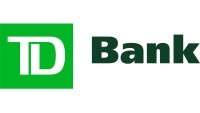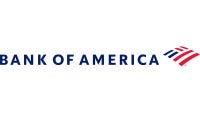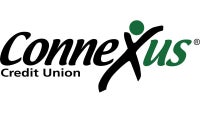Enter your details
Answer some questions about your home equity needs to help us find the right lenders for you.
 Written by
Written by
The listings that appear on this page are from companies from which this website receives compensation.
| Lender | ||||
|---|---|---|---|---|
Answer some questions about your home equity needs to help us find the right lenders for you.
See competitive home equity rates from lenders that match your criteria and compare your offers side by side.
After selecting your top options, connect with lenders online or by phone. Next, choose a lender, finalize your details and lock your rate in.
| LOAN TYPE | AVERAGE RATE | AVERAGE RATE RANGE |
|---|---|---|
| HELOC | 7.95% | 6.32% - 9.51% |
To conduct the National Average survey, Bankrate obtains rate information from the 10 largest banks and thrifts in 10 large U.S. markets. The rates shown above are calculated using a loan or line amount of $30,000, with a FICO score of 700 and a combined loan-to-value ratio of 80 percent.
Note: The above APRs are current as of Apr. 30, 2025. The exact APR you might qualify for depends on your credit score and other factors, such as whether you're an existing customer or enroll in auto-payments.
HELOCs barely budged in the latest week. The average rate on a $30,000 home equity line of credit (HELOC) climbed one basis point to 7.95 percent, according to Bankrate’s nationwide survey of large lenders. This is the second straight week HELOCs have remained below 8 percent — holding at a two-year low.
Home equity credit lines have variable interest rates that change based on the prime rate, which is tied to changes in the Federal Reserve monetary policy. At its latest meeting, March 18-19, the central bank held steady on interest rates but noted that it will keep a watchful eye on how President Trump’s policies on trade and immigration may impact the economy. This was the second meeting of the year in which the Fed has left rates unchanged, following three rate reductions late in 2024. The central bank’s next policy-setting meeting will take place on May 6-7.
According to Greg McBride, CFA, Bankrate's chief financial analyst, the Fed could deliver three rate cuts this year, moves that will translate into lower HELOC rates. McBride forecasts that HELOC rates will continue to fall in 2025, sending the average HELOC to 7.25 percent by the end of the year, a low not seen since 2022.
In addition to the Fed’s moves, HELOC averages can also change because one or more home equity lenders markets an especially generous rate for a promotional period. That’s one reason why it often pays to search around for HELOC offers, at least for a lower introductory rate.
“American homeowners will continue to sit on a mountain of home equity, but aside from short-term HELOC introductory rates, borrowing against it in 2025 will still be pricey,” McBride says.
Still, HELOCs are more attractively priced compared to unsecured personal loans, which currently average 12.43 percent, and credit cards, which average 20.12 percent.
If you’re looking to finance a renovation and have equity to tap, a line of credit could be less expensive than a home improvement loan. It’d also save you from a cash-out refinance, which could mean giving up a low rate on your mortgage in exchange for a new one.
A line of credit isn’t the only way to leverage your home’s equity. Another option: home equity loans, or second mortgages, which come with fixed interest rates. These have also been declining: As of Apr. 30, the average rates for 5-, 10-, and 15-year $30,000 loans were 8.36 percent, 8.51 percent and 8.42 percent, respectively, according to Bankrate’s survey.
Your potential HELOC rate also depends on where your home is located. As of Apr. 30, 2025, the current average HELOC interest rate in the 10 largest U.S. markets is 7.95 percent.
| MARKET | AVERAGE RATE | AVERAGE RATE RANGE |
|---|---|---|
| Boston | 7.74% | 5.99% - 10.65% |
| Chicago | 6.32% | 5.99% - 6.99% |
| Dallas | 8.79% | 5.99% - 11.50% |
| D.C. Metro | 7.80% | 5.99% - 9.74% |
| Detroit | 7.97% | 5.99% - 12.49% |
| Houston | 7.77% | 5.99% - 11.50% |
| Los Angeles | 8.40% | 5.99% - 10.80% |
| New York Metro | 9.51% | 5.99% - 10.80% |
| Philadelphia | 8.52% | 4.99% - 12.50% |
| San Francisco | 7.93% | 5.99% - 10.80% |
| Market Total | 7.95% | 4.99% - 12.49% |
To conduct the National Average survey, Bankrate obtains rate information from the 10 largest banks and thrifts in 10 large U.S. markets. The rates shown above are calculated using a loan or line amount of $30,000, for a borrower with a FICO score of 700 and a combined loan-to-value ratio of 80 percent.
When shopping for a HELOC, look for a competitive interest rate, repayment terms that meet your needs and minimal fees. Loan details presented here are current as of the publication date. Check the lenders’ websites for more current information. The top lenders listed below are selected based on factors such as APR, loan amounts, fees, credit requirements and broad availability.
Before you start shopping for a HELOC, make sure you meet lenders’ requirements. Then, take some time to improve your credit score. If you carry a big credit card balance, pay it down. If your auto loan note is almost done, you might pay it off a month or two early. You might also make a few additional mortgage payments to increase your home equity.
Once everything is in order, shop around. To find the best HELOC rate, compare multiple lenders — a rule of thumb is to get quotes from at least three. Remember, the rate is important, but it’s not the only factor you should consider. Competing HELOC rates are likely to be close, so be sure to also scrutinize fees and terms to get a sense of the APR, and make sure you’re not comparing apples to oranges.
| LOAN TYPE | CREDIT LINE AMOUNT | TERM PERIOD | CURRENT APR |
|---|---|---|---|
| Up to $1 million | 10-year draw, 20-year repay | 6.49% (for 12 months) | |
| $25,000–$400,000 | Up to 30 years | 6.60% | |
| $10,000–$300,000 | 10-year draw, 30-year total repay period | 6.99% | |
| Starting at $25,000 | 10-year draw, 20-year repay | 7.34% | |
| $25,000-$150,000 | 10-year draw/ 20-year repay for variable-rate HELOC; 5-20-year repay for fixed-rate HELOC | 7.92% (fixed) / 8.13% (variable) | |
| $15,000–$1 million | 10-year draw, 20-year repay | 8.05% | |
| Starting at $5,000 | 15-year draw, 15-year repay | 8.17% standard HELOC / 8.67% interest-only HELOC | |
| $10,000–$500,000 | 30 years | 8.25% |
Note: The above APRs are current as of Apr. 3, 2025. The exact APR you might qualify for depends on your credit score and other factors, such as whether you're an existing customer or enroll in auto-payments.







To determine this best HELOC rates list, we surveyed over 30 lenders offering home equity lines of credit. The top HELOC rates displayed here may be special introductory rates, and represent the lowest advertised APR (annual percentage rate) based on a borrower with a credit score of 700 or higher and a combined loan-to-value (CLTV) ratio of 80 percent obtaining a 30-year, $30,000 home equity line of credit.
Note that the lenders listed here are based solely on their offering the lowest APR, and are not necessarily the best overall HELOC lenders Bankrate has scored. Learn more about Bankrate’s lender review methodology.
With a HELOC, you’re given a line of credit that’s available for a set time frame (known as the draw period), usually up to 10 years. While most HELOCs have an interest-only draw period, you can make both interest and principal payments to pay off the line of credit faster.
When the line of credit’s draw period ends, you enter the repayment period, which can last up to 20 years. You’ll pay back the outstanding balance that you borrowed, as well as any interest owed. A lender may allow you to renew the credit line.
In addition to calculating your home equity, lenders look at your credit history, credit score, income and other debts. Most lenders require a combined loan-to-value ratio (CLTV) of 85 percent or less, a credit score of 620 or higher and a debt-to-income (DTI) ratio below 43 percent to approve you for a home equity line of credit.
Your home equity is the key factor lenders look at when deciding if you will qualify for a HELOC. Remember, your equity serves as collateral for the HELOC, and lenders require that you have enough of an ownership stake in your property. While the criteria differ among lenders, some may let you tap as much as 90 percent of your home’s value. But to do so, you also must meet very stringent credit and debt-to-income requirements.Linda Bell, Senior Writer, Home Lending
HELOCs combine relatively low interest rates with the flexibility to borrow what you need when you need it. If you need money over an unpredictable period of time, a line of credit is ideal. However, there are always risks when you take out a loan, especially one that's secured by your home. Here are some of the pros and cons of a HELOC..
Lets you tap home equity without disturbing the primary mortgage (nice if you’ve locked in a low rate).
Typically lower upfront costs than home equity loans.
Lower interest rates than with credit cards.
Usually low or no closing costs.
Interest charged only on the amount of money you use.
Lenders may require minimum draws.
Interest rates can adjust upward or downward.
Lenders may charge a variety of fees, including annual fees, application fees, cancellation fees or early closure fees.
Late or missed payments can damage your credit and put your home at risk.
A HELOC is not the right choice for every borrower. Depending on what you need the money for, one of these alternative options may be a better fit:
While similar in some ways — they both allow homeowners to borrow against the equity in their homes — HELOCs and home equity loans have a few distinct differences. A HELOC functions like a credit card with a revolving line of credit and typically has variable interest rates. A home equity loan functions more like a second mortgage, providing funds upfront in a lump sum at a fixed rate of interest.
A cash-out refinance replaces your current home mortgage with a larger home loan. The difference between the original mortgage and the new loan is disbursed to you in a lump sum. The main difference between a cash-out refinance and a HELOC is that a cash-out refinance requires you to replace your current mortgage, while a HELOC leaves your current mortgage intact; it adds an additional debt to your finances.
With a reverse mortgage, you receive an advance on your home equity that you don't have to repay until you leave the home. However, these often come with many fees, and variable interest accrues continuously on the money you receive. These are also only available to older homeowners (62 or older for a Home Equity Conversion Mortgage, the most popular reverse mortgage product, or 55 and older for some proprietary reverse mortgages).
Personal loans may have higher interest rates than home equity loans, but they don't use your home as collateral. Like a home equity loan, they have fixed interest rates and disburse money in a lump sum.
Before you start applying for a HELOC, here are some home equity resources to prepare you for the process:

What is home equity?
Discover what home equity means and how you can tap it to pay for home renovations or pay off debts, and how to get the best rates.

How to calculate your home equity
Follow these steps to calculate how much equity you have in your home and how to tap into it via a home equity loan or line of credit (HELOC).

HELOC and home equity loan requirements
Everything you need to know about HELOC and home equity loan requirements: credit scores, DTI ratios and more.

How to shop for a HELOC: 10 ways to get the best HELOC rate
Tips that'll help you save money in the long-term by scoring the best possible rate on your home equity line of credit (HELOC).
At Bankrate, our mission is to empower you to make smarter financial decisions. We’ve been comparing and surveying financial institutions for more than 40 years to help you find the right products for your situation. Our award-winning editorial team follows strict guidelines to ensure our content is not influenced by advertisers. Additionally, our content is thoroughly reported and vigorously edited to ensure accuracy.
When shopping for a HELOC, look for a competitive interest rate, repayment terms that meet your needs and minimal fees. Loan details presented here are current as of the publication date. Check the lenders’ websites for more current information. The top lenders listed below are selected based on factors such as APR, loan amounts, fees, credit requirements and broad availability.